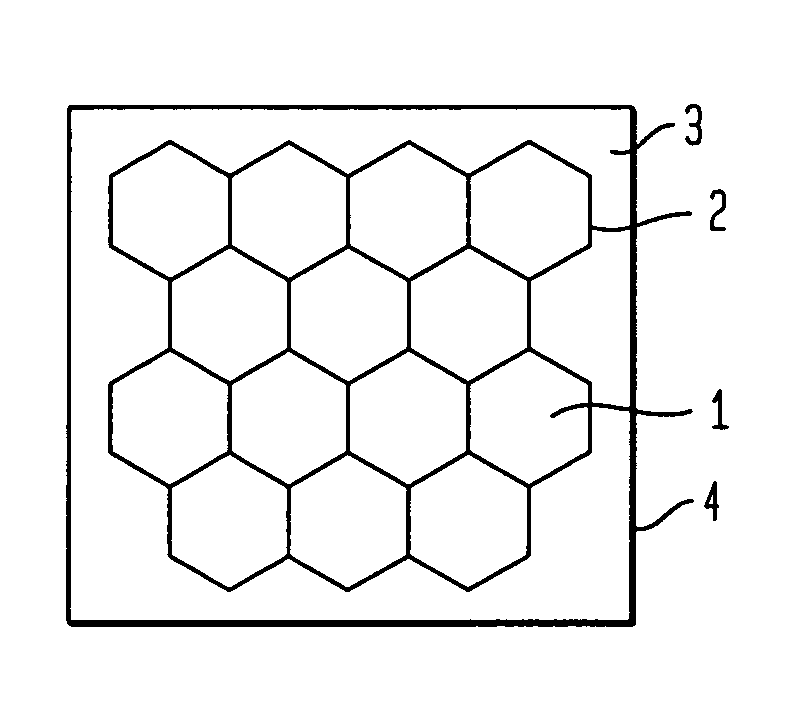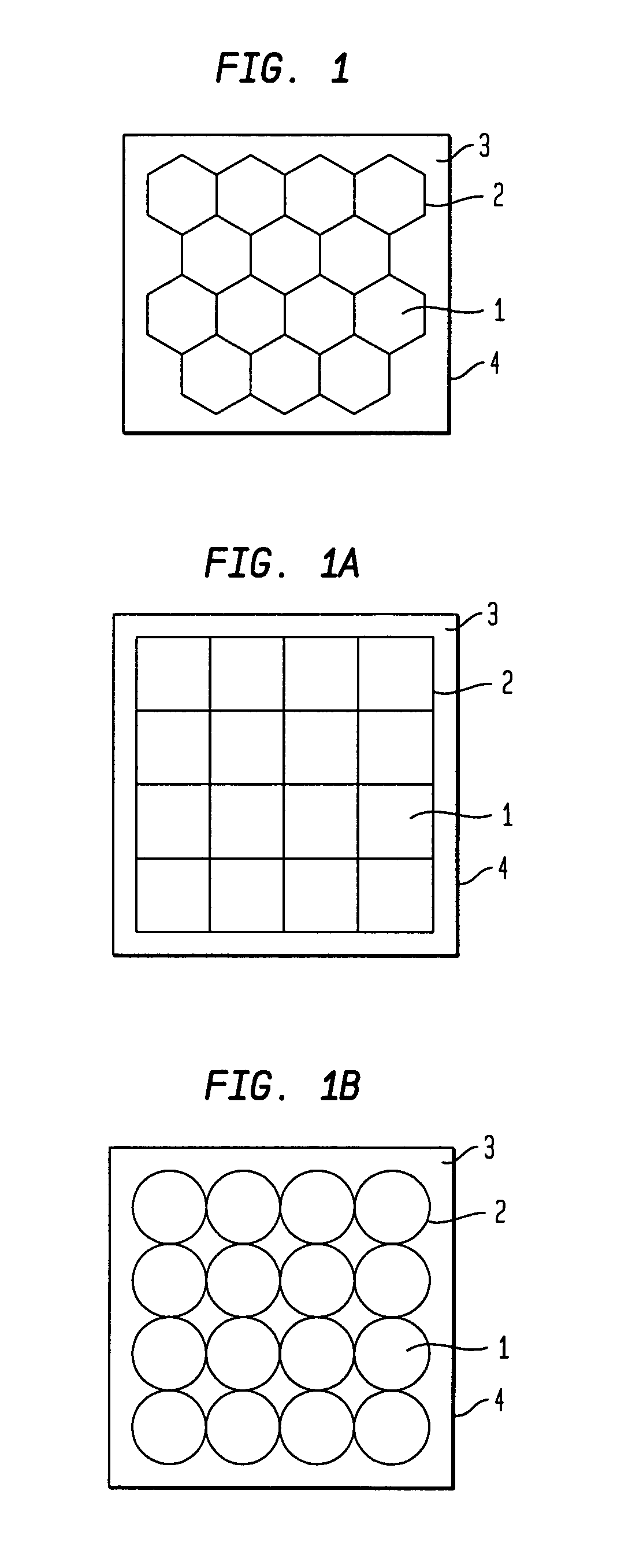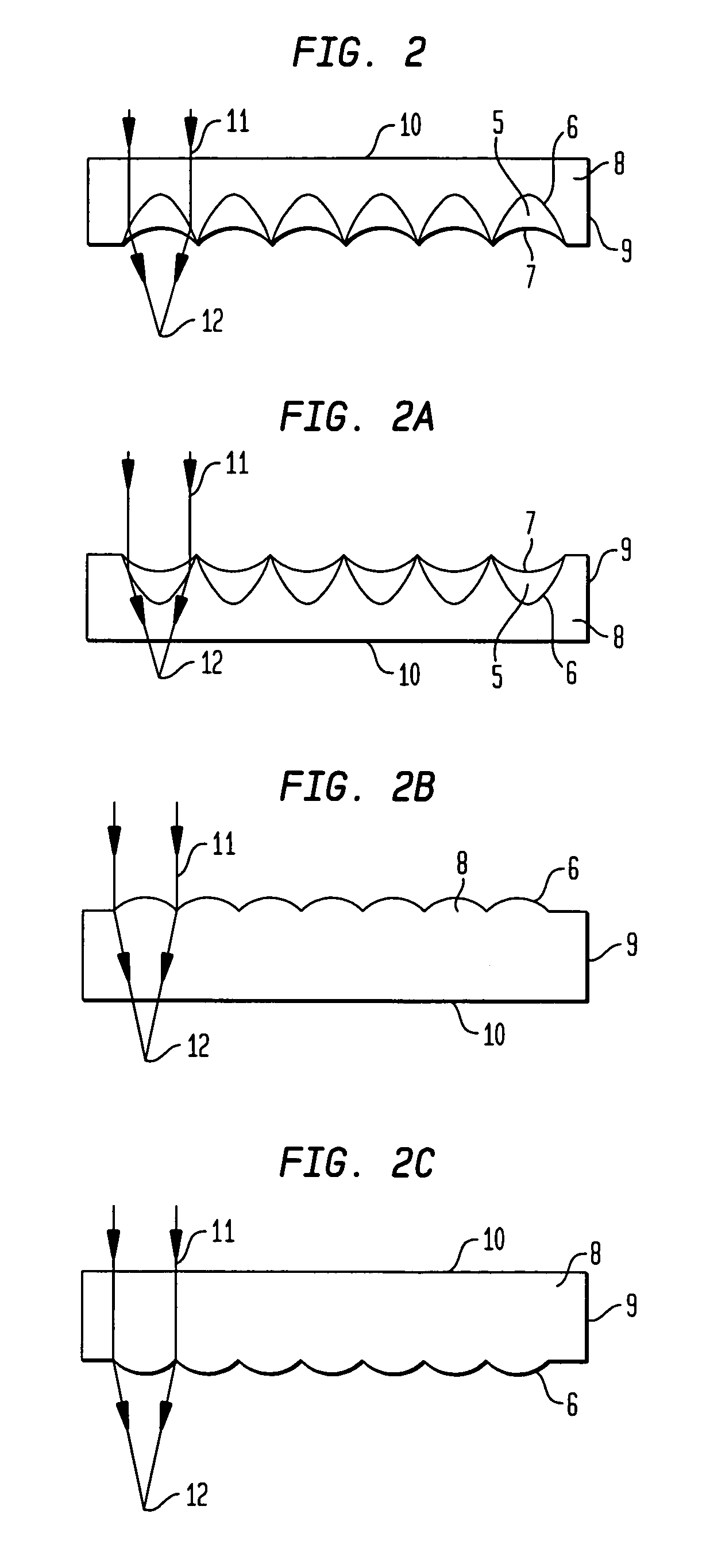While these techniques are useful for many of the indicated applications, these techniques have a number of significant limitations.
First, treatments which are performed over a relatively large area, such as skin rejuvenation and
hair removal, particularly skin rejuvenation, can cause varying degrees of
skin damage over a substantial treatment area.
In particular, such treatments can sometimes result in a detachment of skin
layers.
These relatively large areas of
skin damage can frequently take several weeks or more to heal, and follow-up treatments can normally not be performed during this period.
Further, many treatments, such as for example
hair removal and
wrinkle removal, only require that the treatment be performed in small portions or regions of a much larger treatment area; however, current techniques of treatment generally require that the treatment be performed over the entire treatment area rather than in only the selected regions of the treatment area requiring treatment.
Another potential problem is the need for a
chromophore in the target area which selectively absorbs the applied radiation to generate the heat required for treatment.
For example, for
hair removal or other treatments where
melanin is targeted, heating of
melanin in the epidermis, particularly at the
dermis-epidermis (DE) junction, is a problem.
Where the
chromophore being targeted is water, substantially all tissue in the treatment area and thereabove will be absorbing the radiation and will be heated, making controlled treatment of a selected body component difficult, and increasing the likelihood of unwanted
peripheral damaged.
Another problem with selective photothermolysis is that the
wavelength selected for the radiation is generally dictated by the absorption characteristics of the
chromophore utilized.
However, such wavelengths may not be optimal for other purposes.
Unfortunately, wavelengths preferentially absorbed by for example
melanin, a frequently used chromophore, are also wavelengths at which substantial scattering occurs.
The fact that wavelengths typically utilized for selective photothermolysis are highly scattered and / or highly absorbed limits the ability to selectively target body components, and in particular, limits the depths at which treatments can be effectively and efficiently performed.
Further, the fact that much of the energy applied to a target region is either scattered and does not reach the body component undergoing treatment, or is absorbed in overlying or surrounding tissue to cause undesired and potentially dangerous heating of such tissue, results in optical
dermatology treatments being relatively inefficient.
This low efficiency for such treatments means that larger and more powerful EMR sources are required in order to achieve a desired therapeutic result and that additional cost and energy must be utilized to mitigate the effects of this undesired heating by
surface cooling or other suitable techniques.
Further, since chromophore concentration in a target (for example melanin in the hair) varies significantly from target to target and from patient to patient, it is difficult to determine optimum, or even proper parameters for
effective treatment of a given target using selective photothermolysis.
High absorption by certain types of skin, for example dark skinned individuals or people with very tanned skin, often makes certain treatments difficult, or even impossible, to safely perform.
Still another problem with
existing treatment is that the amount of energy which can be applied to the treatment area, even where damage to the epidermis,
skin scarring or other damage is not an issue, is frequently limited by pain experienced by the patient.
Existing EMR devices for performing
microsurgery are also not adapted for performing
surgery on such small targets.
Further, while EMR techniques are available for treating some of the conditions indicated above, such techniques do not currently exist for treating
scars, including
acne scars,
chicken pox scars and the like, for bumps in the skin resulting from
scar tissue, for
stretch marks, for treating certain parasites, etc.
Still another problem is in the removal of tattoos or pigmented lesions, particularly close to the
skin surface, where existing techniques frequently result in blistering and other skin problems.
Finally, while techniques currently exist which are relatively effective in treating large vascular lesions, such techniques are not as efficient in treating spider veins and other small veins.
Similar inefficiencies exist where radiation is applied over a relatively large area of a patient's skin where treatment is required in only relatively small portions of such area.
 Login to View More
Login to View More  Login to View More
Login to View More 


